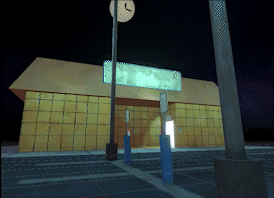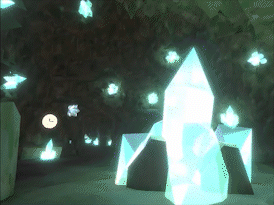
Genscape ; Reality Check
A VR experience that utilizes visual and environmental storytelling to craft an emotional journey set in a lucid dream.
Overview
Time Frame: 14 Weeks
Date: August 2022 - December 2022
Team Size: 4
Team Members: Caitlyn Lenhoff, Em Tyminski, Lochlan Belford, Justin Yook
Client: Professor Ricardo Washington (Student Pitch Project)
Role: Game Design, Level Design, Gameplay Developer
Platform: Meta (Oculus) Quest II
Tools: Unity
Keywords: VR, Art, Emotions
Description:
Genscape:Reality Check is a discovery based pitch project at Carnegie Mellon’s Entertainment Technology Center. It is a VR experience intended to explore the connection between visual narrative and the evocation of emotions. The project makes use of Virtual Reality to transport the guest into an experience posed as a dream. Throughout the dream the environment, as well as the objects in it such as shadow figures, will change to adhere to a hidden emotional arc and thus, purposefully lead the guest through a set emotional journey.
Duties/Personal Contributions
-
Level designer for cave, parking lot, onboarding/offboarding room, and overall floor plan
-
Gameplay designer for emotional arc environmental changes, movement mechanics, and door teleportation mechanic
-
Narrative Design for the onboarding and offboarding scripts
-
Programmer for the shadow figures movement, attacks, animation implementation and world infection.
-
Programmer for the scripting of the onboarding and offboarding rooms
-
Programmer for movement via hand tracking and teleportation from environment to environment through interacting with doors.
DEmo
Process
Level Design: Parking lot, Cave, Onboarding Room
One of the main tasks that I was given was the design and implementation of the cave, parking lot, and onboarding/offboarding rooms.
The parking lot was designed as the first 'room' of the dream. It is the smallest and has the least points of interest within it. This room is designed so that all possible objects that a guest can interact with are directly in front of the guest the moment they arrive in the dream: papers, candles, clocks, and doors. The layout is kept simple in order to encourage them to move on from that room and discover that the door will take them to a new map.
The cave was designed with the intention of increasing anxiety and fear. This is the only room with enclosed spaces to give a claustrophobic feeling. It is also easy to get turned around and lose your way. This design was intentional in order to make the later emotions in the emotional arc, namely fear, stronger. One wrong turn can lead to your demise. The tunnels were also designed with the intention of eliciting the fear of the unknown, as the guest will not be able to see what is hidden in the darkness or around a corner.
The onboarding/offboarding room was designed with the intention of giving context. It is used as an opportunity to explain the mechanics and give the guests a sense of what in this virtual world is 'reality' and what is the dream. I chose to design the room as if it was a sleep study to give context for why the guest would be having such a short, yet disturbing dream.




Shadow Figures (TINAs)
The shadow figures, or Temporal Invasive Nightmare Actors (TINAs) were an integral part of moving the guest into a state of fear and despair. I was tasked with designing the gameplay mechanics for how they would approach and attack the guest, as well as how to increase the intensity of their existence over time.
Movement
I had the duty of designing and implementing the movement in the dream. I initially was trying to decide between four types of movement: hand-tracking continuous movement, hand-tracking teleport, controllers continuous movement, and controllers teleport. At first, the type of movement that we were leaning towards was hand-tracking teleport, as we believed that the guests may end up getting motion sick by using continuous movement. However, in our first playtest, we ran a test for each type of movement to see which was preferred and there was an overwhelming preference towards hand-tracking continuous.
Thus, I ended up settling on using continuous hand movement and designed a process to read if a guest is pointing, and if they are then they will move in that direction.









